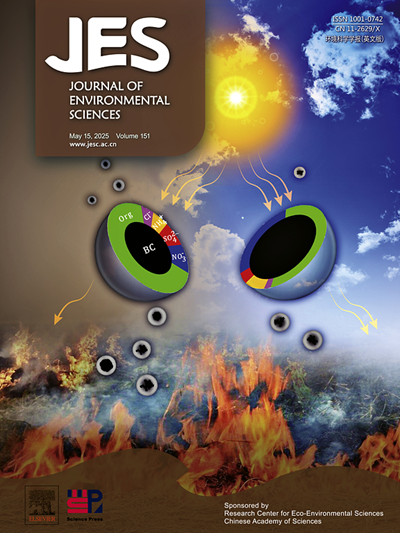Accurate cadmium (II) detection with single crystalline α-Fe2O3 nano-hexagonal modified screen-printed carbon electrode
IF 5.9
2区 环境科学与生态学
Q1 ENVIRONMENTAL SCIENCES
引用次数: 0
Abstract
Even in small concentrations, toxic metals like lead, cadmium, and mercury are dangerous to the environment and human health. Environmental monitoring depends on precisely identifying these heavy metals, particularly cadmium ions (Cd(II)). In this study, we present a novel screen-printed carbon electrode (SPCE) modified with single crystalline α-Fe2O3 nano-hexagons that functions as a sensor for detecting Cd(II). The performance of the fabricated sensor was thoroughly assessed and compared with unmodified SPCE using the voltammetric method. The crystalline structure of the synthesized α-Fe2O3 nano-hexagons was confirmed through XRD, and surface analysis revealed an average diameter and thickness of 86 nm and 9 nm, respectively. The α-Fe2O3 modified SPCE yields a 7-fold enhanced response (at pH 5.0 vs. Ag/AgCl) to Cd(II) than bare SPCE. The modified electrode effectively detects Cd(II) with a linear response range of up to 333.0 µM and a detection limit of 0.65 nM under ideal circumstances. This newly fabricated sensor offers significant potential for environmental monitoring applications by providing outstanding practicality, anti-interference ability, and repeatability for detecting Cd(II) in water samples.
求助全文
约1分钟内获得全文
求助全文
来源期刊

Journal of Environmental Sciences-china
环境科学-环境科学
CiteScore
13.70
自引率
0.00%
发文量
6354
审稿时长
2.6 months
期刊介绍:
The Journal of Environmental Sciences is an international journal started in 1989. The journal is devoted to publish original, peer-reviewed research papers on main aspects of environmental sciences, such as environmental chemistry, environmental biology, ecology, geosciences and environmental physics. Appropriate subjects include basic and applied research on atmospheric, terrestrial and aquatic environments, pollution control and abatement technology, conservation of natural resources, environmental health and toxicology. Announcements of international environmental science meetings and other recent information are also included.
 求助内容:
求助内容: 应助结果提醒方式:
应助结果提醒方式:


